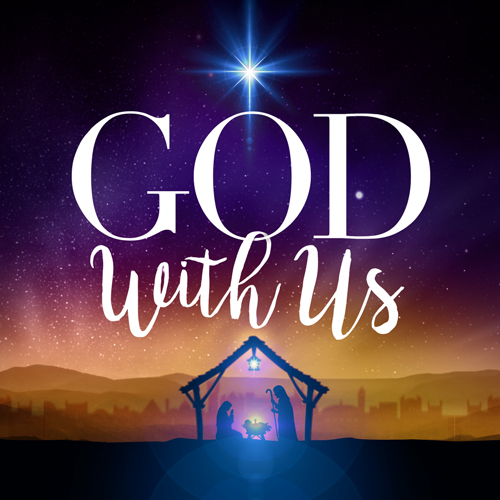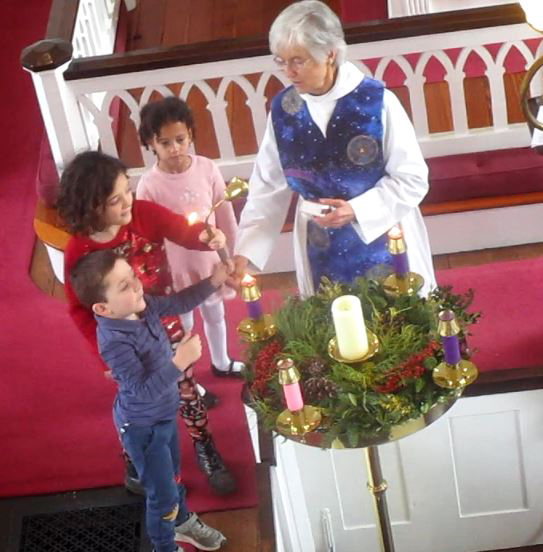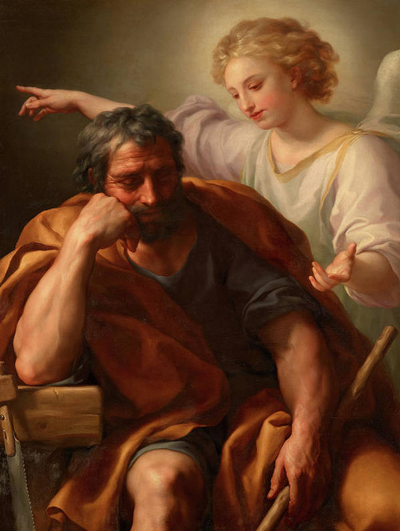1. Candle Lighting Advent 4
2. Hymn – “Creator of the stars of night”
3. Sermon – Advent 4 – “Fear”
4. Offertory – “He shall feed his flock”
St. Peter's Episcopal Church, Port Royal, VA

We are a small Episcopal Church on the banks of the Rappahannock in Port Royal, Virginia. We acknowledge that we gather on the traditional land of the first people of Port Royal, the Nandtaughtacund, who are still here, and we honor with gratitude the land itself and the life of the Rappahannock Tribe. Our mission statement is to do God’s Will in all that we do.
1. Candle Lighting Advent 4
2. Hymn – “Creator of the stars of night”
3. Sermon – Advent 4 – “Fear”
4. Offertory – “He shall feed his flock”

Sermon, Fourth Sunday of Advent, Year A 2022
Isaiah 7:10-16, Matthew 1:18-25
Fear is an awful thing.
Fear can pounce, overwhelming us unexpectedly. Fear can also be like a seed, planted in our minds, a seed that takes root and grows, and takes over our minds like one of those kudzu vines down south that grows out of control, covers everything in its paths, and kills everything under it.
We, too, must deal with the inevitable fears that come to us in this life, for if we do not, fear will take over and kill us.
Dealing with fear can be next to impossible, though, for fear, once it takes root, is so overwhelming.
So here’s the good news in today’s gospel.
God is with us, and God wants to help us deal with our fears. Today’s lessons give us some examples.
King Ahaz in today’s Old Testament reading is filled with fear.
Ahaz is the king of a small nation, Judah. His neighbors, Israel and Syria, are about to invade his nation to force him into an alliance with them so that he’ll have to join in their fight against Assyria, a powerful country that is threatening to overwhelm all of the small nations around it.
God knows that Ahaz is full of fear, and so God says, “Ask me for a sign.”
God is telling Ahaz—”I am with you, Ahaz, and I will help you deal with your fear.”
But Ahaz turns God down. “No, I will not ask for a sign and put the Lord to the test,” he says.
Then the prophet Isaiah says that even though Ahaz doesn’t want it, the Lord will give him a sign anyway.
And the sign is that a young woman is with child and shall bear a son and will call him Immanuel, and that sign means “God with us.” And before the baby grows up, the two nations that Ahaz is worried about will be deserted. In other words, those two kings will be destroyed and Ahaz won’t have to fear them.
But Ahaz chooses to ignore the sign from God and continues to let fear drive his decisions. He turns to the king of Assyria for help, a bad plan, for in the end, Assyria brings Ahaz and Judah to ruin.
If only Ahaz had only paid attention to God’s sign and acted accordingly!
Then we come to Joseph in Matthew’s gospel. Joseph has found out that Mary is pregnant. And so Joseph is frightened. He is caught in a great dilemma. Break the law and take Mary as his wife anyway? Let Mary go? If he lets her go, her life will be in danger, for the penalty she might face for her pregnancy is death.
What to do!
Joseph decides to dismiss Mary quietly, hoping that she will not be exposed to public disgrace.
But after he makes this mental resolve, God comes to Joseph in a dream. The angel tells Joseph not to be afraid, because wouldn’t you be afraid if an angel showed up and started talking to you?
And then the angel gives Joseph a sign, the same one that Ahaz had received so long ago.
A virgin will conceive and bear a son, whose name will be Emmanuel, God with us!
God with us.
When we find ourselves full of fear, that’s the time to look for a sign from God, for God is with us in our fear, and we will get through the fear to the other side if we welcome God into the fear.
But how do we receive signs from God when we are afraid?
Prophets like Isaiah and angels like the one who appeared to Joseph in a dream seem to be in short supply these days, but we need not despair. God still speaks to us in an infinite variety of ways, especially when we are full of fear, or facing an unexpected challenging situation. God will speak to us in our fears and will sustain us as we deal with those fears.
Some of you know Salli Hartman. Her husband, Frank, died of ALS a few years ago. Can you imagine the fear that Frank and Salli felt when the doctor told them that Frank had ALS? What horrible news.
So here’s what happened, and I’m sharing this with Salli’s permission. As they both agonized over what was ahead, Salli received a sign from God, a curious and maybe unwanted at that moment sign, a sign about the future that would require trust in God and patience. Within forty-eight hours of Frank’s diagnosis, Salli felt a very clear call from God to become a deacon in the Episcopal Church. But wait, she had to take care of Frank! As time passed, though, Salli realized that this call to the diaconate was a sign that God would be with her through Frank’s illness and death, and that God had a plan for her and her life after Frank was gone. That was a powerful sign! Salli trusted in God and had patience with God’s timing. Today, she is an ordained deacon and is serving at St Mary’s, over in Colonial Beach.
Now here’s a literal sign from my own life. Earlier this year, I had some tough decisions to make and just didn’t know how I’d manage to do what I felt God was asking me to do. I was full of fear on many levels.
God provided signs about what I should do, and I won’t go into all of that because to tell you about how God’s grace has been in my life in so many ways this year would take hours. But I want to share this one sign because it meant so much to me in the moment.
One rainy cold night, I was driving and trying to deal with a series of alarming texts. I pulled into a parking lot to answer the texts. And there, right in front of me in the window of the store where I had stopped was a hand painted wooden sign, and here’s what the sign said.
“I can do all things through him who gives me strength.” Philippians 4:13.
That handpainted wooden sign was a literal sign from God. What reassurance I felt.
The person who painted that sign and put it in the window could have had no idea that I would see the sign and know that God was speaking directly to me.
God has given me strength this past year.
And God will give you strength too, in your greatest fears.
The signs you receive from God may be enigmatic, or the signs may be literal, but God will speak directly to you—and I won’t discount prophets and angels speaking to you, even in our profane times.
So the next time you find yourself full of fear, expect a sign from God that God is with you. God will sustain you. God will give you strength and courage to deal with your fears.
There’s one other thing that I hope you’ll remember from today’s readings. God is with us in our fears and gives us signs not just for our own benefit, but for the greater benefit to those around us and to the rest of the world.
If Ahaz had paid attention to God’s sign and had resolved to wait on God rather than Assyria, the nation of Judah may have been saved rather than destroyed.
Joseph paid attention to the sign God sent him, and in so doing raised the boy who would turn out to be the Savior of the world.
In this season of preparation, we get to remember all over again that God gives all of us the same sign that God gave to Ahaz and to Joseph so long ago.
“Look, the virgin will conceive and bear a son, and they will call his name Immanuel.”
God with us.
God with ALL of us for the good of all of us.
God’s signs to us, when we receive them, allow us to be part of God’s eternal work of creating beginnings from endings, bringing life out of death, and making all things new.
In these last days of Advent, daylight is short, the weather is cold, and we are weary of the stress and hustle and bustle of preparing for the holidays. In The Dream of Saint Joseph by Anton Raphael Mengs (1773), we meet the sleeping Joseph, who dozes off at his workbench. He is worn out, like we might be these days. His sleep is heavy with the burden of heartbreak and hard decisions, his dreams haunted by the fading hope of a life and family that might not be. His cloak and dark garments weigh on his shoulders as if to symbolize his burden.
Into his dark and heavy sleep enters the light of an angel. The angel illuminates the scene with a lightness to her whole being—an image to balance Joseph’s burden. She is light, she is hope, she is assurance, she is direction, and she is purpose. Her finger points boldly into the darkest corner of the scene as if to say: This, your deepest and darkest fear and worry, is where the Good News of Jesus Christ will meet you. Do not be afraid.
For Joseph, his greatest burden will become his greatest blessing. His dream is a consolation to us all in these darkest days of the year, whether we experience the darkness externally or internally. The light of Christ will shine to dispel the darkness—where in your life do you yearn for it most?

Photo from service Dec. 11
Coming up!
Dec. 18, 11:00am – Advent 4
Dec. 18, Deadline for General Endowment Fund donations
Click here to view in a new window.
From Trinity Episcopal, NY – Summerlee Staten

“The Dream of St. Joseph” – Anton Raphael Mengs 1773/1774
Matthew 1:18-25
“Now the birth of Jesus the Messiah took place in this way. When his mother Mary had been engaged to Joseph, but before they lived together, she was found to be with child from the Holy Spirit. Her husband Joseph, being a righteous man and unwilling to expose her to public disgrace, planned to dismiss her quietly. But just when he had resolved to do this, an angel of the Lord appeared to him in a dream and said, “Joseph, son of David, do not be afraid to take Mary as your wife, for the child conceived in her is from the Holy Spirit. She will bear a son, and you are to name him Jesus, for he will save his people from their sins.” All this took place to fulfill what had been spoken by the Lord through the prophet:
“Look, the virgin shall conceive and bear a son, and they shall name him Emmanuel,” which means, “God is with us.” When Joseph awoke from sleep, he did as the angel of the Lord commanded him; he took her as his wife, but had no marital relations with her until she had borne a son; and he named him Jesus.
In Sunday’s Gospel, Matthew considers an annunciation. Unlike the other Gospels, which focus on the announcement of Jesus’s impending birth to Mary, Matthew wonders how the news must have landed for Joseph, Jesus’s earthly father.
Joseph probably had traditional aspirations for his married life. He must have been looking forward to a new chapter with Mary — the children they would raise together and the life they would build in Nazareth. But when he is told that Mary is expecting, Joseph does not get what he is expecting. His carefully laid plans are disrupted by a God who has bigger ideas. His life, like Mary’s, will never be the same — and now he will have to rely on a deeper trust in God.
In his refusal to dismiss Mary, Joseph exhibits stalwart compassion. Because he is a “righteous man,” he is guided by kindness and is willing to relinquish his expectations, and maybe even his dreams of a particular kind of married life, to a deeper vision.
It is Joseph, Matthew says, who “named” Jesus, a name that means salvation. And yet, he surely could not have known the full implications of Jesus’s arrival — not in his own life, nor for the life of the world.
The annunciation to Joseph reminds us that Christmas is disruptive. Jesus’s arrival in the world and in our lives destabilizes our plans for a perfectly planned life and asks us to accept the interruption of God into time — into the messiness of human life.

Love is a crucial part of the Advent story. Because of Joseph’s love for Mary, he didn’t stone her when he found out she was pregnant with what he thought was a child out of wedlock with another man (Matthew 1:18-19). Mary has a natural motherly love for Jesus, and ultimately, we see God’s love for everyone by sending his son for us (John 3:16).
Jesus focused on preaching love throughout his ministry. Two of his greatest commands involve love: Love God, love your neighbor (Matthew 22:36-40).
Love is the greatest of all the virtues on the Advent wreath and encompasses Jesus’ entire purpose for being on earth (1 Corinthians 13:13).


Explore Advent, Part 4 – Over the Sundays in Advent there will be a presentation each week focusing on that week’s scriptures, art and commentary and how they demonstrate the themes of advent. Let’s continue with Advent 4.

From the Presiding Bishop- Advent Messages 2012-2021

Feast of the Annunciation – 9 months before we celebrate the nativity there is the related Feast of the Annunciation on March 25 which is described here .
 Art of the Annunciation – The Annunication has been depicted in art for a thousand years. Here is a study of the symbols of the Annunciation.
Art of the Annunciation – The Annunication has been depicted in art for a thousand years. Here is a study of the symbols of the Annunciation.
 Blessed Like Mary- David Lose invites us to understand that we are Blessed Like Mary .
Blessed Like Mary- David Lose invites us to understand that we are Blessed Like Mary .

National Geographic explores – “How the Virgin Mary Became the World’s Most Powerful Woman”

 A Digital Nativity.
A Digital Nativity.

What if current social media like Facebook, Gmail, etc had been available at the birth of Christ ? Watch the Digital Nativity
Arts and Faith- Advent 4, relating art and scripture
Henry Ossawa Tanner, “The Visitation,” 1909–1910
Henry Ossawa Tanner’s realist depiction of the Visitation invites us around Elizabeth’s table at her house, at the moment when Mary arrives and greets her. The setting is spare, except for the table, which is covered in a white cloth and has bread, wine, and an ample bowl of fruit awaiting consumption.
Mary is just entering the house. Her face is kind and joyful, her bodily presence already humming the Magnificat before she utters the words that will come to sing her praise to the Lord. She is a familiar Mary, a relative to us all, and her warm presence recalls the homecomings and joyful arrivals of loved ones that we experience, especially around the holidays.
Elizabeth’s expression welcoming Mary is complex. In light of Tanner’s realist style, we would expect her rising from the table, moving toward Mary in anticipation of a warm embrace—and that is sure to come. But Tanner catches Elizabeth here in a moment of awe instead. If Mary’s body sings the Magnificat, Elizabeth embodies her words of awe and wonder: “How does this happen that the mother of my Lord should come to me?” Her upheld hands are in a position of prayer honoring the presence of God in their midst, in her home, around her table. Elizabeth’s expression is one of serene reverence, a total response to the divine presence she senses in the core of her being, confirmed by the stirring of the child in her womb. “Blessed are you, Mary”—this Elizabeth knows, utters, and prays.
The meeting between Mary and Elizabeth teaches us about the holy. Tanner shows us that we encounter the holy in the everyday moments of our lives—an arrival, a homecoming, a table set for a meal. But Elizabeth’s expression reminds us that while we find holiness in this world, it is not of this world, that finding holiness is a glimpse of God’s magnificent otherness that beckons us to draw close, but also fills us with wonder and awe. May we find and welcome holiness in these last days of Advent as we await the light of Christ.